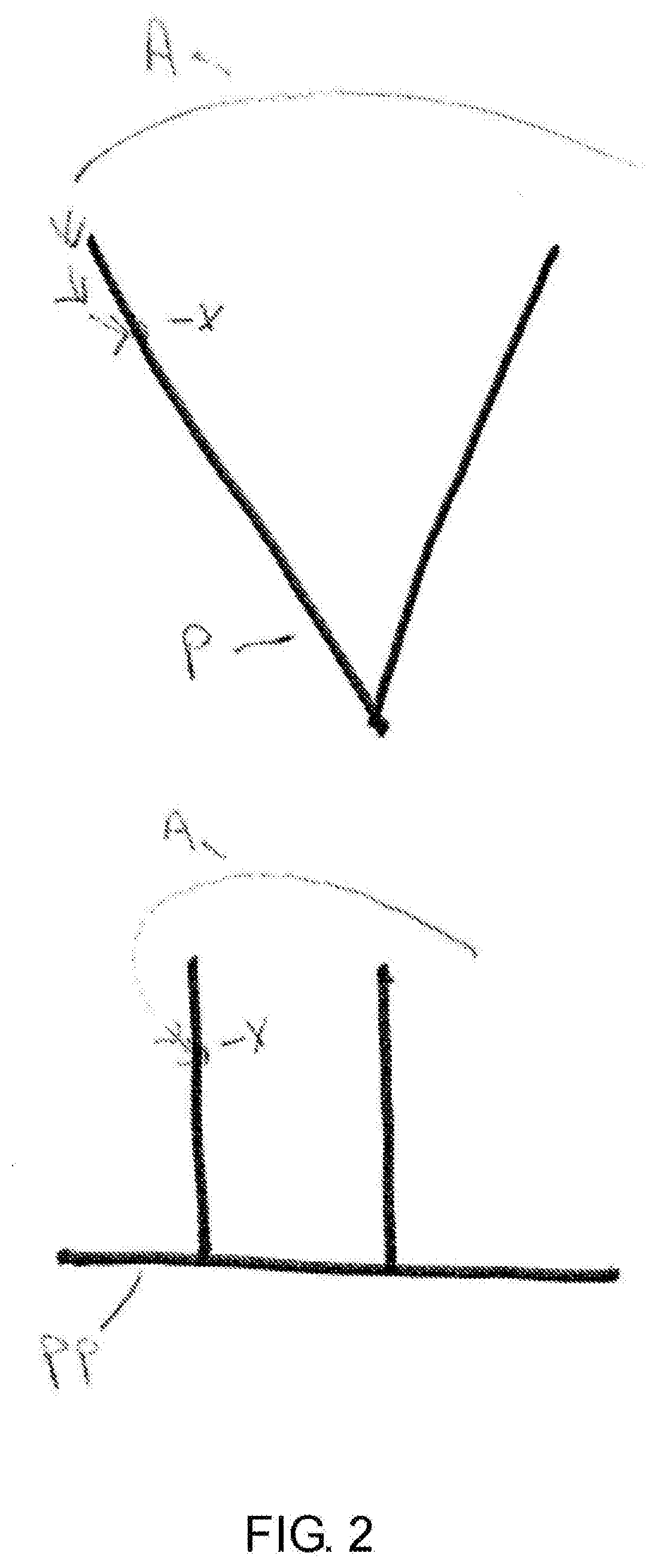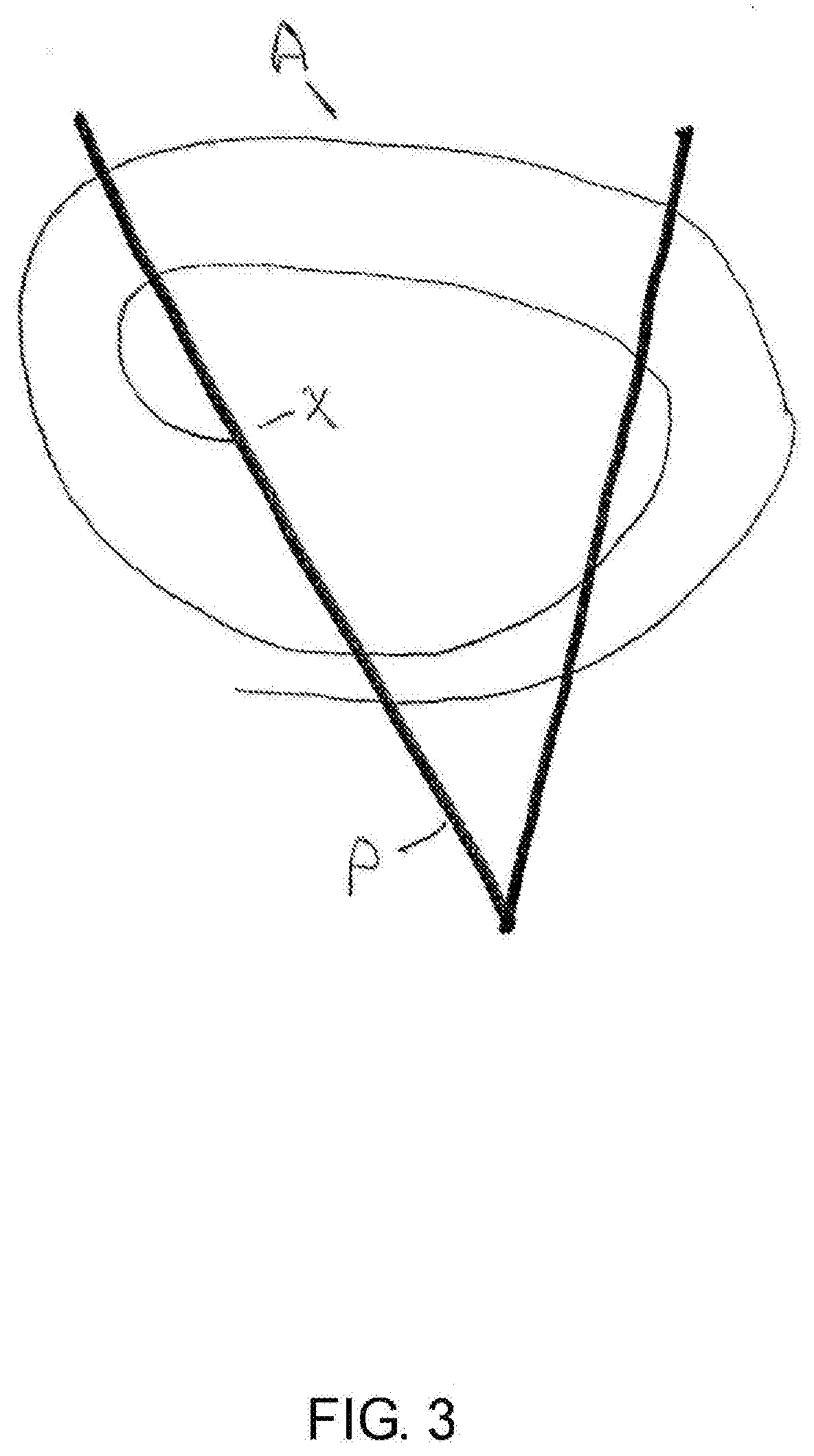Dividing the arc of an angle into "n" number of equal parts.
a technology of dividing the arc of an angle and equal parts, applied in the direction of measuring gauges, printing, writing aids, etc., can solve the problem that none of those methods is sufficient to divide any arc of any angle or wave or any angle or wave into any number of equal parts desired
- Summary
- Abstract
- Description
- Claims
- Application Information
AI Technical Summary
Benefits of technology
Problems solved by technology
Method used
Image
Examples
Embodiment Construction
[0030]In the following detailed description, the exemplary processes according to the teachings for this application to divide the arc of any angle and its accompanying angle into any number of desired equal parts will be described by their applications. Such teachings also apply to the division of the arcs of waves of any amplitude into equal parts of equal length. The number of equal parts to be derived may be either an even number or an odd number. The number of degrees in the arc of a circle or its angle need not be known. The amplitude of the wave from which an arc is being divided need not be known. The results derived from use of any one or more of the exemplary processes herein may be used for other purposes.
[0031]It should be noted that although only the division of an arc into equal parts are described in the teachings of this application, any one or more of the individual processes described herein or the products and / or results of the application of any one or more of th...
PUM
 Login to View More
Login to View More Abstract
Description
Claims
Application Information
 Login to View More
Login to View More - R&D
- Intellectual Property
- Life Sciences
- Materials
- Tech Scout
- Unparalleled Data Quality
- Higher Quality Content
- 60% Fewer Hallucinations
Browse by: Latest US Patents, China's latest patents, Technical Efficacy Thesaurus, Application Domain, Technology Topic, Popular Technical Reports.
© 2025 PatSnap. All rights reserved.Legal|Privacy policy|Modern Slavery Act Transparency Statement|Sitemap|About US| Contact US: help@patsnap.com



